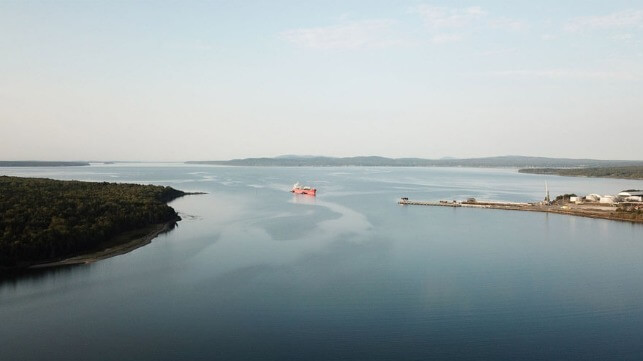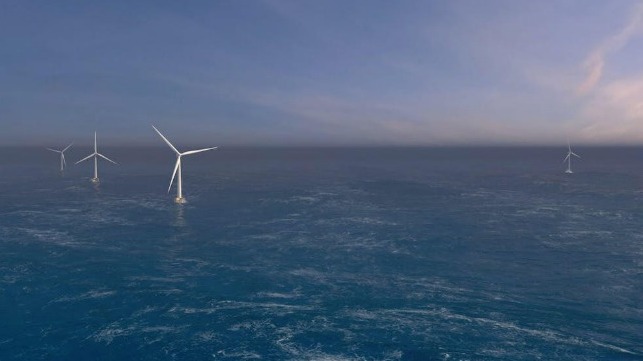Maine Selects Preferred Site for Port to Support Offshore Wind Industry

The State of Maine has selected a section of state-owned Sears Island, north of the city of Portland and located in Penobscot Bay as its preferred site for a port facility to support the offshore wind industry. The site would be about 100 acres in total, which is about one-third of the state-owned parcel or a little more than one-tenth of the entire island, with Governor Janet Mills saying that she believes it is the best spot to support the emerging industry.
The selection of the site followed an extensive review process led by the Maine Department of Transportation and Maine Port Authority to consider the state’s primary port development options, including multiple potential sites in the Port of Searsport, the Port of Eastport, and the Port of Portland. The state concluded that the Sears Island parcel is the most feasible port development site in terms of location, logistics, cost, and environmental impact based on input from port and offshore wind stakeholders, including the University of Maine, and technical and engineering analyses.
“This was not an easy decision, nor is it one that I made lightly. For more than two years, my administration has evaluated Sears Island and Mack Point thoroughly…,” said Governor Janet Mills. “Sears Island is the best choice for an offshore wind port because it is already owned by the state, designated for the purpose of port development, will cost less in the short-term and long-term, and is expected to result in less environmental harm.”
Sears Island is a 941-acre island off the coast of Searsport. In 2009, Sears Island was, by agreement, divided into two parcels, with approximately 600 acres, or two-thirds of the island, placed in a permanent conservation easement held by the Maine Coast Heritage Trust. The remaining one-third, or approximately 330 acres, was reserved by MaineDOT for future development.
The proposed port would be a purpose-built facility for floating offshore wind fabrication, staging, assembly, maintenance, and deployment. The governor cited that in addition to the state owning the land, it has the deepwater access necessary for a port facility. Unlike other possible locations, they do not expect it would require dredging. The estimated port construction cost on the Sears Island site is approximately $500 million.
Maine released its Offshore Wind Roadmap a year ago, citing the importance of developing the port facility. It builds on a 2020 study in which the governor directed MaineDOT to study the port needs to support Maine’s offshore wind industry. The study, delivered in November 2021, evaluated various locations in the Port of Searsport for an offshore wind port, including Mack Point and an area of state-owned Sears Island.
The Bureau of Ocean Energy Management (BOEM) is moving forward with the review process for the offshore sites and a year ago released its draft area for potential commercial offshore wind leasing in the Gulf of Maine. The area is expected to be one of the later to be developed because the geography requires the use of floating wind turbines.
The port proposal is subject to extensive and independent State and Federal permitting processes, including assessments of environmental impacts and alternative sites. MaineDOT, on behalf of the State, intends to apply for permits later this year, which will also include additional opportunities for stakeholder and public input on the project.
Offshore Wind Majors Qualified for Norway’s First Auction in March 2024

Norway is set to launch its first offshore wind auction after announcing today that it has prequalified five applicants, including some of the largest developers in the offshore wind energy sector. The auction scheduled for March 18 comes nearly one year after the Norwegian Energy Ministry announced the first competition on the Norwegian continental shelf and as part of a long-term plan to transition Norway from the oil and gas sector to renewable energy.
Among the largest players set to participate in the auction are Aker Offshore, BP, and Statkraft which will make up one of the consortiums. Equinor and RWE will be a second bidder along with Shell, Lyse, and Eviny in a third partnership. Parkwind will be partnering with a division of Ingka, which is the largest franchise/operator of the famed Ikea stores. Energie is also qualified to bid.
Today’s selection follows the announcement last November that seven groups had submitted applications to participate in the auction. The ministry had said it wanted between six and eight bidders and it would consider if it was going to proceed if fewer applications were accepted. In the end, they elected to proceed with five applications while noting that it includes “strong actors” which they said demonstrates the interest in the development of offshore wind on the Norwegian shelf.
The ministry has reported that it was pleased with the strong interest. They noted it came despite significant cost increases for the global offshore industry in 2023. As a condition for prequalifying applicants needed to demonstrate that they would meet minimum criteria for sustainability and “positive ripple effects.”
Two companies, Mingyang Smart Energy and Hydroelectric Corporation, had also submitted applications. They however were not among the companies qualified to participate in the auction.
Today’s announcement clears the companies to participate in the auction for Sorlige Nordsjo, a concession located approximately 85 miles off Norway’s southern coast between Norway and Denmark. The surveys of the area have shown water depths of approximately 170 to 230 feet, which they believe could be developed either with fixed bottom or floating turbines. The government says there will be capacity for up to 3 GW while most of the companies in preliminary discussions suggested they would propose two equal phases.
The government in a 2012 study also proposed a second area known as Utsira Nord off the west coast which due to greater depth would require floating wind turbines. The auction for this site has been delayed while the government last year designated three additional areas also for assessments. The goal was to complete those studies by November 2024 so that they might move to auctions in 2025.
The Norwegian government has an ambition to award areas that have a total potential for 30 GW of offshore wind production by 2040.
No comments:
Post a Comment